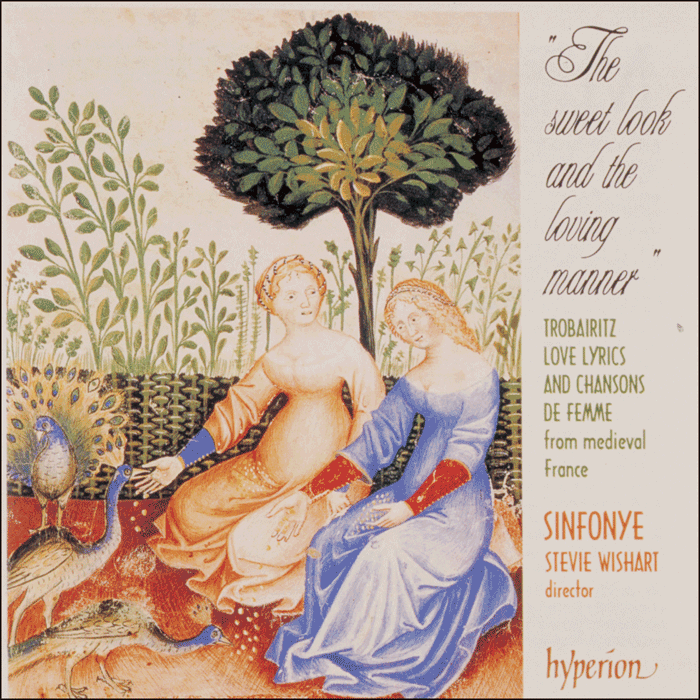The sweet look and the loving manner
Sinfonye
CDA66625
Mores of medieval Provence, the region of France now known as Occitania, gave women a degree of political and creative freedom which appears to have been far greater than in most other times. The twelfth and thirteenth centuries are often seen as something of a renaissance for women and, not surprisingly, it is from this time that we have inherited songs by over twenty female troubadours, known as 'trobairitz' and cited as such in the romance Flamenca (c1250). Their lyrics are particularly poignant as the only female witnesses we have from a courtly milieu whose codes of love still resonate in modern times. The troubadours usually composed their courtly lyrics to fulfil a commission for a particular patron or patroness, but it seems more probable that the much smaller group of trobairitz were wealthy and well-educated women of high social standing whose songs tend to fulfil a more personal expression of the joys and ardour of fin 'amor. Only a small proportion of troubadour lyrics survive with their music, and sadly this is also the case with the trobairitz, for it is only the Comtessa de Dia's most famous love song A chantar m'er (recorded by Sinfonye on Bella Domna, Hyperion CDH55207) that has its melody intact. However, to a certain extent there was some independence between the transmission of the poetry and music. Numerous Occitan songs share the same poetic structure, with an identical number of lines per stanza and number of syllables per line, and even share the same rhyme scheme. It was therefore possible for medieval poet-composers to set their lyrics to a pre-existing melody. This practice of contrafacture was well known throughout the Middle Ages and makes it possible to perform certain of those trobairitz songs which have only their words extant, but replicate the exact poetic structure of another song which has come down to us with its melody intact.

